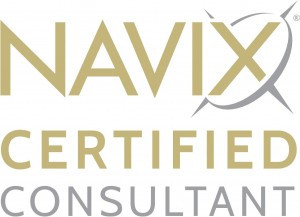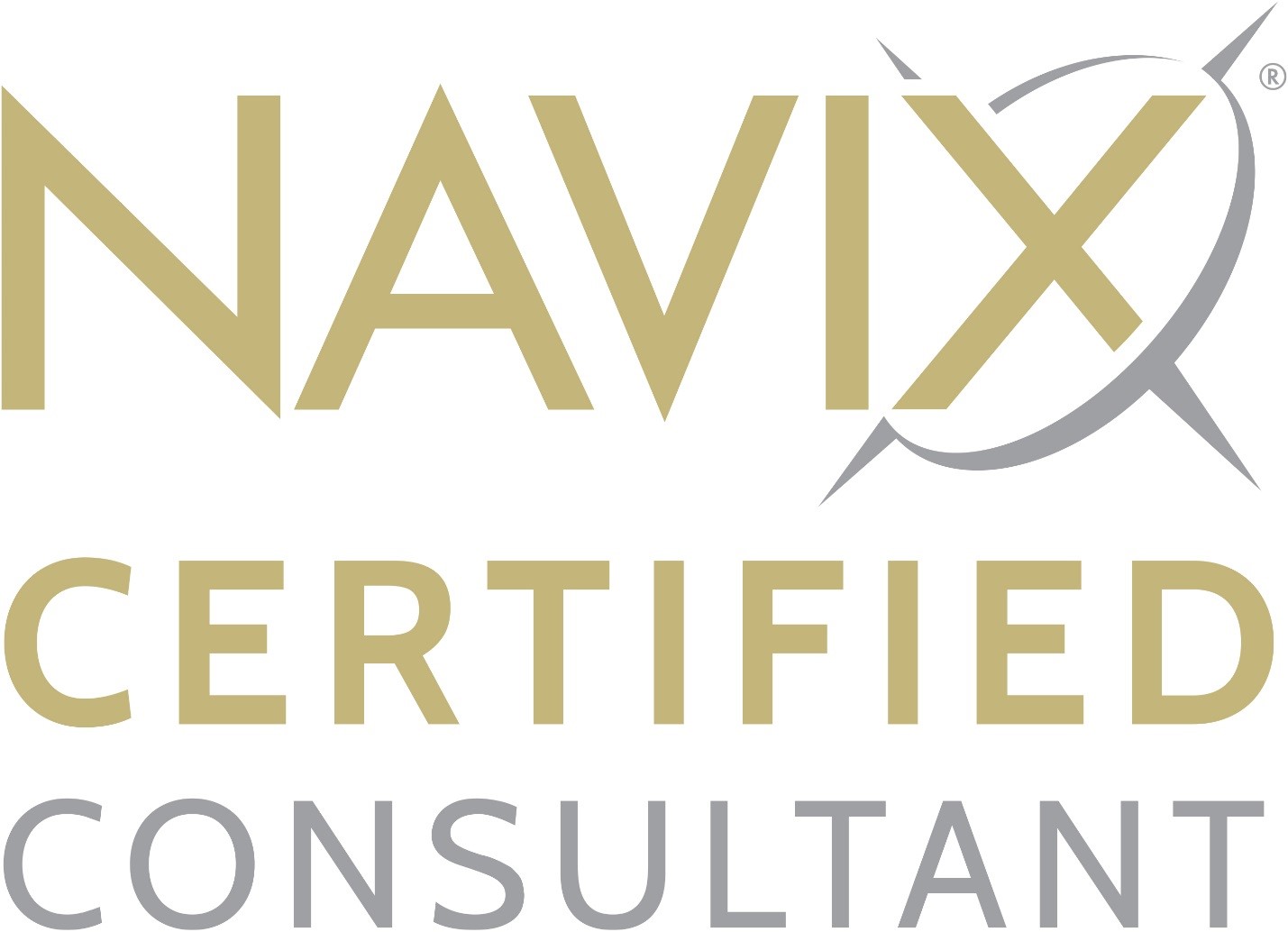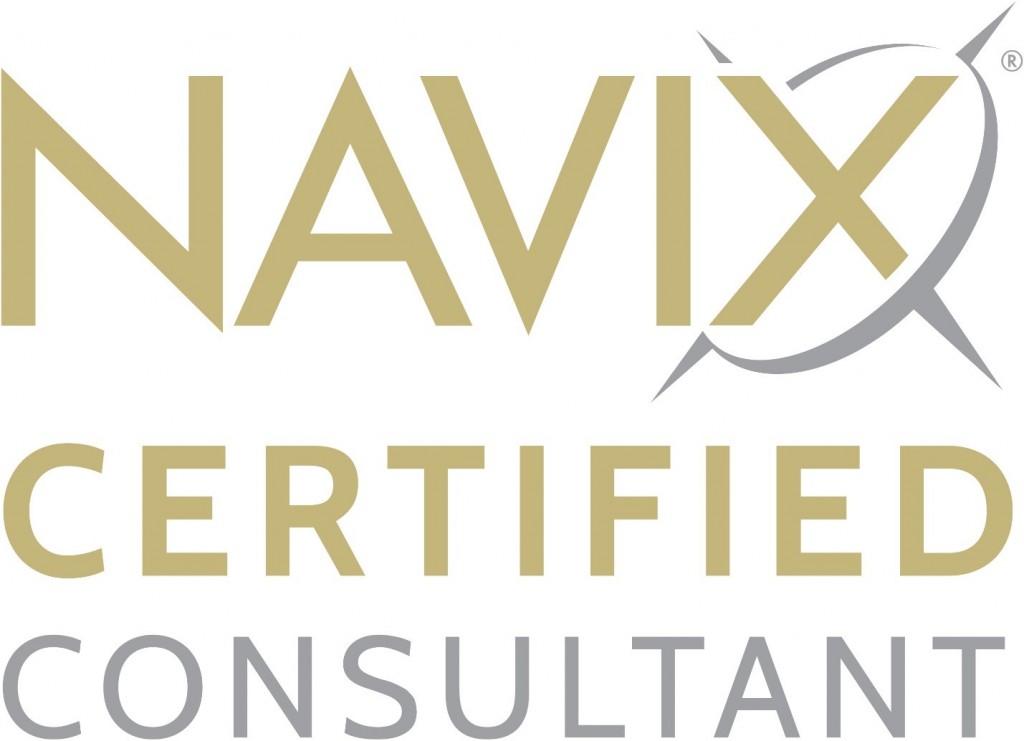
Archive for June, 2018
Own a Majority of Your Company and Think You’re in Control? Think Again.
If you share ownership of your company but personally have at least 50%, you are probably used to being in control. On issues like company strategy, money, and people, you have the final say. But what about when it comes to exiting from your company? For example, what if you want to sell the business, but one or more minority co-owners do not want to sell? Are you still in control? Probably not. Here’s why.
We routinely say in the U.S. “It’s a free country.” One freedom is the right to own property. Within this right generally, one person cannot force another person to part with property that he or she owns. If you don’t want to sell your car, home, or shares of Apple Computer stock, then nobody can make you. The same principle applies within your company. If you wish to exit by way of sale, but one or more minority co-owners don’t want to sell, typically you cannot make them sell their portion of your company. If a minority co-owner does not want to sell, then you might not be able to sell either. Most buyers will not want to acquire your majority interest in the company if the purchase comes with one or more unknown minority partners, especially people opposed to the sale. Practically speaking, minority co-owners can veto a sale, leaving you not in control of your own exit.
This reality often comes as an unwelcome surprise to majority owners seeking to exit. Some owners only learn their minority partners can block a sale when a potential buyer is standing in the doorway. Should this occur, your only options are trying to talk your minority partners out of their objections, offering to buy them out at an even higher price, or seeking legal action if you and your lawyers can find sufficient grounds. None of these are attractive options. The company sale would be in jeopardy, and the relationship with your co-owners may suffer irreparable harm.
To regain control over your exit, and to avoid a future impasse with your co-owners, take the following two important steps:
Step One: Talk About Exit – Now
Many business co-owners do not have open, detailed conversations about their business exit goals and plans. It’s not hard to see why. The company keeps you busy, and planning for exit may not be on the priority list for most days. But co-owners cannot afford to wait to have these necessary conversations to determine if their exit goals are in alignment or in conflict. The more time you give yourselves to work out any exit goal misalignment, the more options you have. Also, you never know when a buyer might come along—if you wait until a buyer is standing there to have your first exit conversations, it will be too late.
To help co-owners get started, download our free eBook called The Guide to Creating Co-Owner Alignment.
Step Two: Put It in Writing – Now
Once co-owners start having the difficult but necessary exit conversations, they discover the advantages of implementing written agreements that govern how ownership may change hands, such as upon the sale of the company. One common type is a buy-sell agreement. Buy-sell agreements are legal documents that identify situations where ownership in the company may change hands and provide instructions on how each situation is to be handled. The most familiar example is what happens upon the death of a co-owner. A buy-sell agreement usually requires the deceased owner’s heirs to sell the interest back to the company or the surviving owner(s) and at a specified price. This protects everybody: the deceased owner’s heirs receive a cash payout while the remaining owner(s) move forward without unwanted business partners.
Buy-sell agreements nearly always address the death scenario, and most address other contingencies such as if a co-owner becomes seriously ill or disabled. However, few buy-sell agreements govern how co-owners must handle an offer to sell the entire company. This omission leaves business co-owners at risk. To fill in the gaps, ask your legal advisors about including “drag-along” and “tag-along” rights within your buy-sell agreement. These odd-sounding provisions bind co-owners together when selling the business to an outside buyer. The “drag-along” part requires that if the majority co-owner sells his or her stake in the business, the minority co-owners are required to join the deal.
To fill in the gaps, ask your legal advisors about including both “drag-along” and “tag-along” rights within your buy-sell agreement.
This protects majority co-owners against minority co-owners holding up a sale. “Tag-along” is the reverse—the majority co-owner cannot sell his or her stake without the minority owners tagging along and being included at the same price and terms. This protects minority co-owners from being left out of any deal. Together, these provisions bind all the co-owners into a single block and restore the majority owner’s control over the decision to sell the entire business.
Making sure you are in control of your own exit is critically important. At NAVIX, our clients – even those who share ownership of their company — are prepared for multiple exit scenarios, and NAVIX works with our clients to ensure they have agreements in place to mitigate against one minority owner holding up a sale. To learn more about these exit planning steps, contact us to schedule a complimentary, confidential consultation with one of our independent NAVIX Consultants.
To discuss your unique business, and how to plan for and achieve a successful exit, Call 772-210-4499 or email Tim to schedule a confidential, complimentary consultation.
Four Tips on How to Thank Employees When You Exit
Most business owners care about more than just money at exit. In addition to achieving their personal financial goals at exit, most owners have other objectives they seek to achieve, one of which is thanking those employees who contributed to the company’s success. While the desire to say thank you is common, most owners struggle with determining the right way to do it. Questions like “Who do I thank?” and “What’s appropriate?” may lack easy answers, especially when rushing to get everything else done shortly before exit. Plus, this issue contains potential landmines; overlook somebody, create perceptions of favoritism, or thank anybody in a manner he or she believes fails to recognize his or her contribution fully, and your best intentions can do more harm than good, adding fuel to the fire during an already sensitive transition. If you intend to thank at least some of your employees when you exit, here are four tips on how to do it the right way.
Tip #1: Start Planning Now
Start formulating your plans now on how to say thank you. If you intend to exit within the next year, you need to get going. You’re about to have two full-time jobs (running your company and executing an exit plan), and you likely will be hard pressed to address this issue adequately. If you intend to exit several years from now, you will be glad that you started now. Coming up with whom you need to thank, and how you mean to do it, is not a decision you’ll want to rush. Plus, the next tip is only available to those owners who plan ahead.
Tip #2: Use Incentive Compensation Plans to Help Say Thank You
If you have several years before you intend to exit, design and implement an incentive compensation plan that will pay employees bonuses when you exit the company—if the employees and company hit specific performance goals. (There are many types of such programs. Watch this short webinar on Golden Handcuffsplans to learn about our preferred approach.) This accomplishes several good things all at once:
- Create incentives for individuals and teams to help grow the company and maximize the value
- Flip the normal “I-Win-You-Lose” reality about how your exit impacts the employees (who typically don’t have any ownership) into “I-Win-and-You-Win” by creating financial payouts for them if and when you sell the company
- Create a retention strategy so that your top people stay with the company up to and beyond your exit, thereby decreasing risk for your buyer and likely increasing company value
On top of these advantages, payments that employees may earn under a well-designed incentive compensation plan will also serve as some or perhaps all of your thank-you gestures to these same people. Whatever amount the employees earn under the plan constitutes your thank-you when you exit. Some owners react to this idea by saying, “It’s not a thank-you if they’ve earned it.” But it is. Any gratitude you display toward your employees when you exit will be tied to their individual and team performance. The people who perform well and earn incentive compensation payouts at your exit are likely to be the very same people whom you wish to thank. This arrangement removes the concern that amounts paid at your exit are arbitrary or unfair. Plus, payouts under the incentive plan should be sufficiently large enough that they won’t be expecting additional dollars from you at exit beyond what they earn through the plan.
Tip #3: Add a Personal Touch
Most owners turn to cash for the lion’s share of any thank-you’s they express at exit. Cash has obvious attractions, whether the payments are arbitrarily determined by you or are generated under an incentive compensation plan. You are not limited to cash, however, and should consider non-cash thank-you’s. Just as with gifts to family and friends, cash can be seen as impersonal and require little effort on the part of the giver. In lieu of cash, or on top of a cash payment, a personalized non-cash thank-you can create deeper, tailored, and more lasting expression of appreciation.
For example, a former business owner client had a dedicated CFO who was a passionate chef in his spare time. Upon the successful sale of the company, our client gave the CFO a large cash bonus payment. The owner also sent his CFO to Italy for a ten-day world-class cooking school. The Italian cooking school trip cost only a fraction of the cash bonus, yet years later, the CFO was still talking about how grateful he was to have worked for that owner, and how much he enjoyed the cooking school. The cash bonus was barely mentioned.
Many owners do not use non-cash gifts because 1) it can take time to generate gift ideas, and if exit is near, you may be pressed for time, and 2) owners fear that, unlike cash, not everybody will equally like and appreciate the non-cash items they receive. Take the time to research your employees’ interests, passions, and aspirations outside of work to identify an item or experience that makes your thank-you personal for the employee.
Tip #4: Know Your People
To make personal, memorable, non-cash thank-you’s, you must know your people. Specifically, you need to know their interests, passions, hobbies, dreams, bucket-lists, and relationships outside of work. That might sound like a lot of personal information, but you likely know some of it already. For any information you don’t have, here’s how you can get it without tipping your hand.
First, there are four questions that you ideally can answer about those employees you intend to thank:
What are their major hobbies outside of work?
With what civic, charitable, social, or religious groups they are highly involved?
What’s at least one trip or experience they’ve always wanted to do but never have?
What do they wish they had more of in life?
If you know the answers to these four questions, ideas for a personalized non-cash thank-you will likely present themselves. The challenge becomes how do you gather this information without revealing your intentions? Don’t ask all of these questions of one person at one sitting. Instead, take a little time and be creative. One client asked his top employees one question each month, over four months, subtlety weaving the inquiry into other conversations, over a bite to eat, or while traveling together. Another client used these questions as an ice-breaking exercise during a corporate retreat. While employees were sharing their answers and getting to know each other, our client was secretly taking notes.
At NAVIX, our clients are not only organized for exit but also know how they intend to thank valued employees when the exit date arrives. To learn more about how to approach the human side of exit planning, contact us to schedule a complimentary, confidential consultation.
 To discuss your unique business, and how to plan for and achieve a successful exit, Call 772-210-4499 or email Tim to schedule a confidential, complimentary consultation.
To discuss your unique business, and how to plan for and achieve a successful exit, Call 772-210-4499 or email Tim to schedule a confidential, complimentary consultation.
How to Avoid Getting Burned by Earn-Outs When Selling Your Company
At NAVIX, we know that the term “earn-out” sends a shiver down the spine of business owners. And for good reason. Business owners seeking to sell their business at exit overwhelmingly prefer all-cash deals. Owners know that any portion of the purchase price held back at closing is at risk—you might never see those dollars. Despite owners’ overwhelming preference, most deals are not 100% cash transactions, but instead include any number of mechanisms that pay additional dollars to the seller after closing only upon achieving certain results. One of the most common mechanisms is an earn-out. Here’s why owners seek to avoid earn-outs, and how to avoid getting burned by them if part of your deal.
First, a quick explanation of earn-outs. An earn-out is a provision defining how a selling owner may receive additional payments after closing, contingent upon certain results such as stipulated financial performance or milestones. Earn-outs are used to bridge valuation gaps between the seller and buyer. In essence, with an earn-out the buyer is saying to the seller, “We will pay you more for your company later, if you actually go out and achieve ____________ .”
Here’s an example: You believe your company is worth $15 million, in part because you believe the company will continue to grow 25% per year like it has the last few years. Your buyer is not convinced that the growth rate is sustainable and is only willing to pay $10 million at closing. To bridge the gap, your buyer agrees to an earn-out that may pay you up to an additional $5 million after closing if the company sustains the 25% (or better) growth rate over the next several years.
Earn-outs can be useful in bridging value gaps, and some deals might never be closed without incorporating an earn-out into the agreement. However, an earn-out often trades one problem (i.e. the buyer and seller do not agree on price) for another set of problems:
- You and your buyer have to agree on the specific performance or milestones needed to receive earn-out payments. For obvious reasons, buyers prefer to tie earn-outs to the bottom line. Sellers, however, beware. After you have sold the company (or a portion of it), you probably are in control of very few factors that determine the bottom line. Sellers should seek to tie the earn-out to top line results, as they are easiest to measure and hardest to manipulate.
- If you have an earn-out tied to financial metrics somewhere below the top line, you and the buyer must agree on key definitions and how those metrics will be calculated. It’s not enough to tie an earn-out to “net profits” without defining what goes into net profits, and what does not. The issue is more complicated than just agreeing on the meaning of certain words and phrases. After purchasing your company, the buyer may allocate some of its overhead and liabilities onto your company’s financial results. This can be a nasty surprise if you and the buyer did not precisely define net profits during the sale negotiation.
- Regardless of which metrics the earn-out is tied to, as the selling owner, you are still at risk if the buyer mismanages (unintentionally or intentionally) the company’s operations after the sale, undermining or outright killing any chance of hitting the earn-out targets. For example, assume you have an earn-out tied to top line results. Using top line revenue seems simple and clear. But the new owner can take any number of actions that make it hard or impossible to achieve the top line milestones: What if newly hired leaders are not competent? What if the new owner raises prices, ultimately decreasing sales or even losing customers? What if the new owner raids the company and redeploys some of your best salespeople to another department? What if the new owner changes the company name and in doing so disrupts marketing and lead generation? You, the selling owner, bear the risk of any decisions or actions that negatively impact company performance to the point that you do not hit your earn-out targets.
- You and your buyer have to agree on additional important terms and definitions, such as: How long will the earn-out last? Is there a cap on the potential payments? Can missed earn-out installments be recovered if the company later catches up? Can the buyer offset indemnification claims against earn-out payments? These are only some of the important issues that must be addressed and negotiated.
Owners seeking to one day sell the company at exit should take two steps to avoid getting burned by earn-outs. First, build a company that is so attractive to potential buyers that they will offer all-cash terms. Earn-outs at their core are a mechanism for buyers to limit risk: risk that the company will not perform as desired after sale, risk that existing customers will leave or decrease their volume, risk that top employees will flee, etc. Building a business that sells for all-cash terms involves more than just growing revenues and profits. To avoid earn-outs altogether, you must hire and align a quality leadership team, eliminate your involvement in routine sales and operations, achieve a strong track record of growth, reduce customer concentration, and have effective financial systems and processes. Building a business strong in these areas reduces buyers’ risk to the point that buyers do not see any need for an earn-out.
The second step to avoid getting burned by an earn-out is to hire and work with an experienced exit advisory team. Your accountant, lawyer, investment banker, and exit planner must have extensive experience with situations like yours and be qualified to give you sound advice. Your investment banker and lawyer in particular will be your A-team in negotiating the deal terms, especially any earn-out, and protecting your interests. Do not use general purpose advisors when selling your company. You carry the risk that any fees that you might save will be paid back multiple times over in future costs and losses.
At NAVIX, our clients are prepared to potentially sell their business for all-cash deals and have advisory teams qualified to help avoid the fallout caused by an ill-negotiated earn-out. To learn more about how to prepare your company to sell for 100% cash, contact us to schedule a complimentary, confidential consultation.
To discuss your unique business, and how to plan for and achieve a successful exit, Call 772-210-4499 or email Tim to schedule a confidential, complimentary consultation.
What’s Your Brand Worth?
What’s Your Brand Worth? How to Build an IP Portfolio that Maximizes Company Value at Exit
June 26, 2018 @ 2PM – 3PM EST
Building and protecting your company’s brand helps create value for your company at exit. Brand building and protection take years. Owners preparing for exit must know the steps to take to ensure their intellectual property portfolio is protected and its value maintained. In this webinar, you’ll learn everything you wanted to know about intellectual property and then some…
What you’ll learn:
- What are the differences between trademarks, trade secrets, copyrights, and patents?
- What role do they have for your business?
- What are the best tips for product development?
Check out our archive of all past NAVIX exit planning webinars:
Click here to view now
Adjusted EBITDA: The Second Most Important Number to Know as You Prepare for Exit
At NAVIX, we know that most business owners’ top goal at exit is to reach financial freedom, which means having enough money so that work is a choice and not an economic necessity. If reaching financial freedom is the number one goal at exit, then your Exit Magic Number™ – the net amount needed to get there – is the most important number to know. So, what’s the second most important number to help you prepare for exit? Your company’s adjusted EBITDA. Unfortunately, many owners either do not know this number or calculate it incorrectly. Here’s why.
If you intend to sell your business at exit, potential buyers will typically look to your company’s adjusted EBITDA to determine their offer price. EBITDA stands for Earnings Before Interest, Taxes, Depreciation and Amortization. Contrary to misconception, it does not really calculate a company’s profitability. However, buyers put such importance on EBITDA because it shows the company’s current earnings power. EBITDA, in essence, ignores a company’s current ownership issues (debt, tax structure, and depreciation and amortization, which are all largely the byproduct of past capital investment and acquisition decisions) to isolate the company’s current cash flow.
You don’t have to calculate or track your company’s EBITDA; it’s not required to complete your tax returns. You probably tend to focus more on top line growth. Yet for most buyers, EBITDA is the first and most important step in determining what they will pay for a company they seek to purchase.
So if that’s EBITDA, then what is adjusted EBITDA?
Well, like many business owners, you might not always make decisions that maximize your company’s EBITDA. Sometimes, you have other motives and priorities. For example, if your salary exceeds what you would pay somebody else to do your job, your extra above-market rate compensation is lowering the company’s earnings, hence lowering EBITDA. The same thing happens if you enjoy significant tax-deductible ownership-related perks such as company cars, expense accounts, travel reimbursement, and family members on payroll for generous amounts. All of these discretionary expenses depress the EBITDA, but most likely you don’t mind since they also lower your tax bill each year.
Other business decisions may cause EBITDA to be artificially overstated. For example, if you are paying yourself a below-market salary, either to free up money to grow the company, or because you take the lion’s share of your income from the company in the form of profit distributions, the EBITDA may be higher than it otherwise would be if you were paying yourself market-rate wages.
If you intend to sell your business at exit, potential buyers will typically look to your company’s adjusted EBITDA to determine their offer price.
It’s not just owner compensation and perks that can influence EBITDA. Other issues can impact your EBITDA one way or another, including: accounting methods, benefits programs, leases on space or equipment, and product development costs. As a result, many if not most privately-held companies either do not track their EBITDA, or if they do, EBITDA has not been “normalized” to reflect other business decisions and issues that may understate or overstate the figure.
An adjusted EBITDA therefore involves carefully reviewing these issues and calculating a truer picture of the earnings, as if the company was owned by somebody other than you. Items that artificially understate EBITDA are “added-back” into the figure and any items that artificially overstate EBITDA (“negative add-backs”) are factored in as well.
None of this may matter until you get to the point where you intend to exit within the next several years. If you intend to sell your business at exit, accurately presenting the company’s adjusted EBITDA is paramount. Because buyers typically want to see the prior three full years’ financial statements, owners need to begin calculating their adjusted EBITDA well before they intend to exit—we recommend at least five years before the desired exit, in case you sell more quickly than planned.
Unfortunately, too many companies do not accurately calculate their adjusted EBITDA. Adjusting the EBITDA properly and thoroughly requires somebody with experience preparing companies for sale; many small to mid-sized company bookkeepers and controllers lack this experience. If you get close to exit and don’t know your true adjusted EBITDA, then any of the following problems can occur:
- If your EBITDA is artificially understated, as is common, offers from buyers will be much lower than otherwise possible. For example, if a buyer is offering to pay five times the earnings for your company, then every $1.00 that your EBITDA is understated will cost you as much as $5.00 off your sale price.
- If your EBITDA is overstated, this will likely come out during negotiation or the due diligence process, throwing a rather large wrench into your plans to sell the company for a certain price. For example, a buyer paying five times the earnings may reduce its offer price by $5.00 for every $1.00 that EBITDA is discovered to be overstated.
- Whether under- or overstated, if you and the potential buyer cannot agree on what the accurate adjusted EBITDA is, it will be hard to reach agreement on other important figures, undermining your chance to sell the business at all.
When owners do not accurately know their company’s adjusted EBITDA, one more problem commonly occurs. If a potential buyer unexpectedly comes knocking on your door via an unsolicited email or phone call inquiring if you wish to sell, you should not share any financial data before you can produce an accurate adjusted EBITDA. Prematurely sharing inaccurate or non-adjusted EBITDA figures gets the process with this potential buyer off on the wrong foot from the very first step.
Knowing your adjusted EBITDA in advance is fundamental to a successful sale. At NAVIX, our clients know their adjusted EBITDA, as well as other key financial figures and metrics needed to prepare a company for sale to an outside buyer. To learn what it takes to prepare your company for sale, and to help you get ready for exit, contact us for a complimentary, confidential 45-minute consultation with one of our NAVIX independent Consultants.
To discuss your unique business, and how to plan for and achieve a successful exit, Call 772-210-4499 or email Tim to schedule a confidential, complimentary consultation.
Five Reasons Why “Letting My Management Team Run the Company” is Not an Exit Strategy
We occasionally hear business owners say something like, “My exit strategy is to hire a great management team to run the company, so I can step back and just collect a check.”
Hiring quality leaders for your business is always desirable. Yet, this tactic on its own will not produce a successful and happy exit for these five reasons:
1.Even with highly capable leaders running your company, you still own the company.A significant portion—perhaps the majority—of your wealth remains locked inside the business. At some point you likely will want to access some or all of your capital tied up in the business. This requires an exit strategy.
2. Hiring excellent leaders may allow you to step out of the day-to-day operations of the company, freeing up a large portion of your time — but only a portion.Total absentee ownership is a fantasy. You will need to continue supervising the team’s performance, reviewing business plans and budgets, and approving major decisions. Reducing your involvement in day-to-day operations may help you pursue other interests, but you remain closely tied to your company.
3. In the real world, things change.At some point the management team that you hired to run the company will change, pulling you back into the company’s operations. If a key leader retires, dies, or quits, you will need to identify and hire a replacement. You might also have to temporarily fill in for the missing leader until the replacement has been hired and trained. Or, if a key leader has subpar job performance, you have to do the work of supervising that person more closely and perhaps terminating him or her. In our experience, losing just one key leader from a carefully-built team makes it frustratingly clear to the owner that you have not exited from the company.
4. As long as you own the company, your risks remain unchanged.Many owners seek to reduce personal and financial risks as part of their exit planning. Even with an excellent leadership team in place, the business’s risks are still your risks. You still have to personally guarantee the business debts where required. If the business gets into financial, tax, human resources, or legal difficulties you are still impacted. Any significant capital expenditures are still your decision and risk. Your personal financial net worth remains highly concentrated within the company. Letting a management team run your company typically does little to reduce your personal and financial risk.
5. Even with a highly capable team running your company for you, at some point you will still need a plan for determining what ultimately happens to your ownership interest in the company.You have only punted the issue. Even if you do nothing until your death, your ownership in your company will still either pass to your heirs, be sold, or be shut down. You still have important goals and objectives to plan and execute.
Hiring a competent leadership team is never a bad idea. A quality team not only drives business success but also creates exit planning flexibility and opens up additional paths for your exit. It allows you to delay exit if you wish. Moreover, a quality team usually increases company value at sale or, if passing the business to your children, provides for a smoother transition. Competent leadership teams help business owners achieve successful exits.
However, hiring the team and sitting back to collect a check is not an exit strategy. You are still an owner with all of the responsibilities, burdens, and challenges that ownership entails. Therefore, you still need an exit plan beyond a highly skilled management team.
To discuss your unique business, and how to plan for and achieve a successful exit, Call 772-210-4499 or email Tim to schedule a confidential, complimentary consultation.










 Tim is a Consultant to Business, Government and Not-for-Profits Organizations specializing in innovative and challenging ways for organizations to survive, to thrive and to build their teams.
Tim is a Consultant to Business, Government and Not-for-Profits Organizations specializing in innovative and challenging ways for organizations to survive, to thrive and to build their teams.